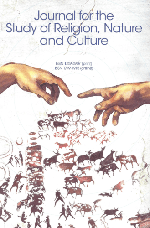FREQUENTLY ASKED QUESTIONS
Q: Why is another scholarly society needed?
Many scholars from diverse disciplines are especially interested in how and why religion and spirituality interact with nature and culture. They find themselves sometimes drawn as much, if not more, to the work of scholars from disciplines different than their own. Because scholars primarily attend meetings sponsored by their original disciplines, they have little opportunity to engage scholars with different backgrounds. Meanwhile, many environmental studies scholars with an intense interest in religion and environmental matters and behaviors have no scholarly home to focus on these relationships. The idea for a new scholarly organization was born from the desire for greater interdisciplinary exploration of the relationships between religions, environments, and cultures.
Q: What do the key terms in the ISSRNC’s title and mission statement and bylaws, such as culture, nature, religion, environments mean? Aren’t they problematic and shouldn’t you define them more carefully?
Yes, they are problematic, and no, we should not define them. The purpose of the ISSRNC is not to superimpose meanings or values over these contested terms and that which they represent or signify. Rather, it is to create a venue, a habit, for these and many other terms to be analyzed, discussed, debated, and for such discussions and debates in turn to be analyzed, discussed and debated. The value of the tropes in the ISSRNC’s title and mission statement is that they are broad and vague, providing a large conceptual umbrella under which scholarly inquiry into them can occur and flourish.
Q: How does the ISSRNC differ from other religious, environmental, and scholarly groups which are interested in religion and nature?
Many groups have emerged in recent decades, both scholarly and those comprised of religious people or environmental advocates, who have become interested in the religion variable in nature-human relationships. Many of these organizations are hoping to help religious institutions and individuals shape their beliefs and practices toward more environmentally sustainable lifeways. Many participants in the ISSRNC are involved in such efforts. The ISSRNC itself is neither a religious body nor an advocacy organization, however. It is engaged in the study of such efforts to fuse religious and environmental concerns. It is equally open to perspectives that take a purely naturalistic approach to understanding human religiosity (that do not assume there is something morally praiseworthy or metaphysically “true” to religious perception, belief, and practice), or to critical perspectives that suggest that religions inherently promote environmentally damaging lifeways, or to studies that examine nature-human-society relationships that have nothing to do with what today might be called ecological integrity or ecosystem health.
In short, the ISSRNC is open to a wider range of critical inquiry than has generally been undertaken by religious, scholarly, or environmental groups that, in their various ways, seek to promote environmentally beneficent behavior. The ISSRNC includes, however, many scholars who are especially interested in such questions.
The ISSRNC also differs from some types of organizations mentioned above in that it is a democratically organized membership organization. It is open, therefore, to anyone with the requisite scholarly credentials. This ensures that no topic, theory, or perspective that fits under the ISSRNC’s “critical inquiry” mission will be precluded from the ferment for political reasons or the judgment that doing so might be antithetical to one or another envisioned cause.
This is purposeful and, from the outset, distinguishes the ISSRNC from advocacy and environmental groups. It is possible to be involved as a scholar in thinking and arguing about the relations of religion/nature/culture without being interested in ecology, or wild nature, or non-human beings, or even believing religion is potentially or actually a positive thing.









